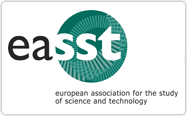Framed Uncertainty
Making Sense of Residential Wood Stove Emissions in Denmark
DOI:
https://doi.org/10.23987/sts.131318Abstract
Residential wood stoves are often highlighted as the worst pollution source of PM2.5 air pollution in Denmark, accounting for 52 percent of national emissions. This unambiguous number implies accuracy, and that researchers know how much PM2.5 pollution can be attributed to residential wood stoves with precision. But we demonstrate in this article that emissions from wood stoves are notoriously uncertain and key parameters largely unknown. While the problem of wood stove emissions is often tied to the stove itself, this article illuminates the socio-technical assemblage surrounding wood stoves as an often overlooked aspect. Drawing upon discussions of uncertainty, we first show how knowledge about the socio-technical assemblage is constructed based on assumptions that emerge from domains of imperceptibility. Second, we argue that kindling practices can be understood as a kind of uncertainty which cannot be known with any degree of probability. To make better sense of wood stove emissions in public policy, we propose a ‘framed uncertainty’ lens to highlight the particular kind of uncertainty associated with key parameters in the socio-technical wood stove assemblage. Finally, we discuss the implications of changing the policy frame towards the socio-technical assemblage surrounding wood stoves in terms of reducing emissions.
Downloads
Published
Versions
- 2025-05-15 (2)
- 2024-04-18 (1)
Issue
Section
License
Copyright (c) 2024 Rasmus Haarløv, Mikkel Bille

This work is licensed under a Creative Commons Attribution 4.0 International License.





